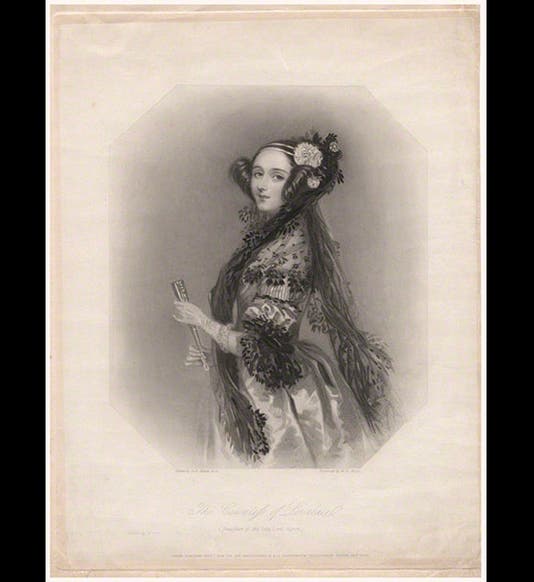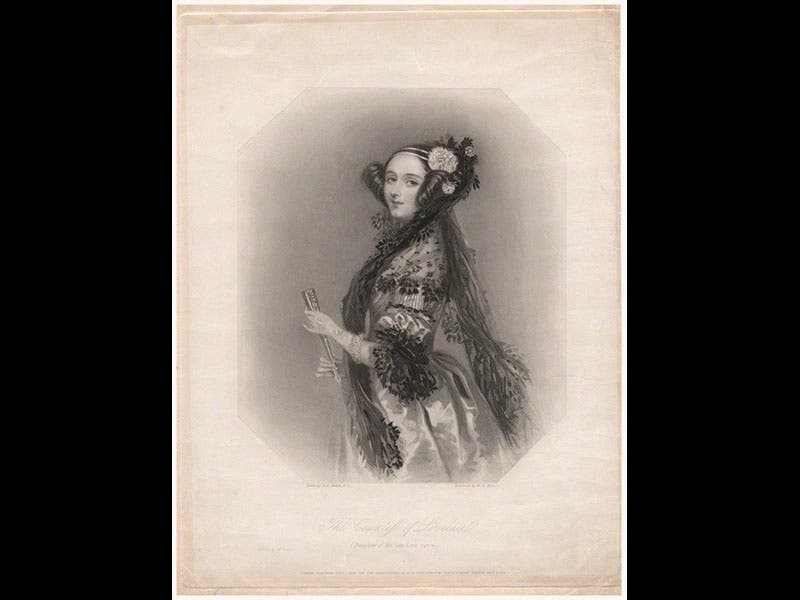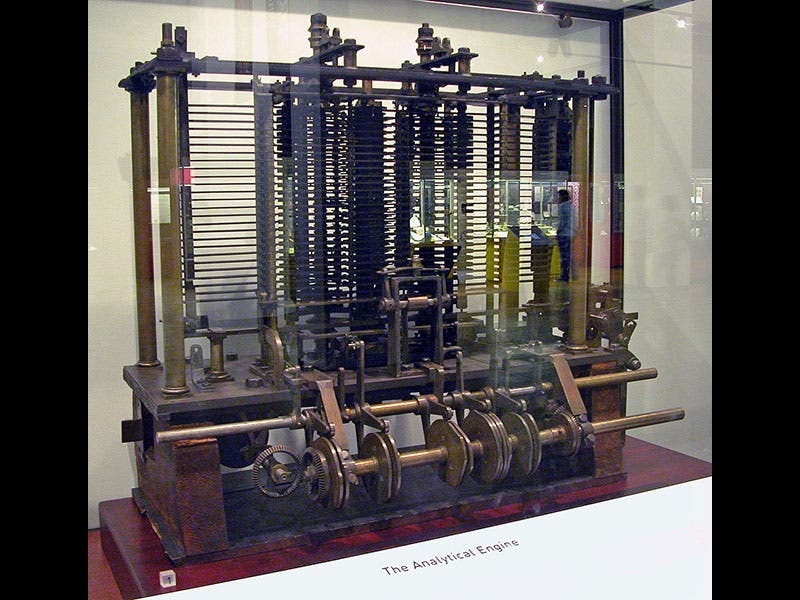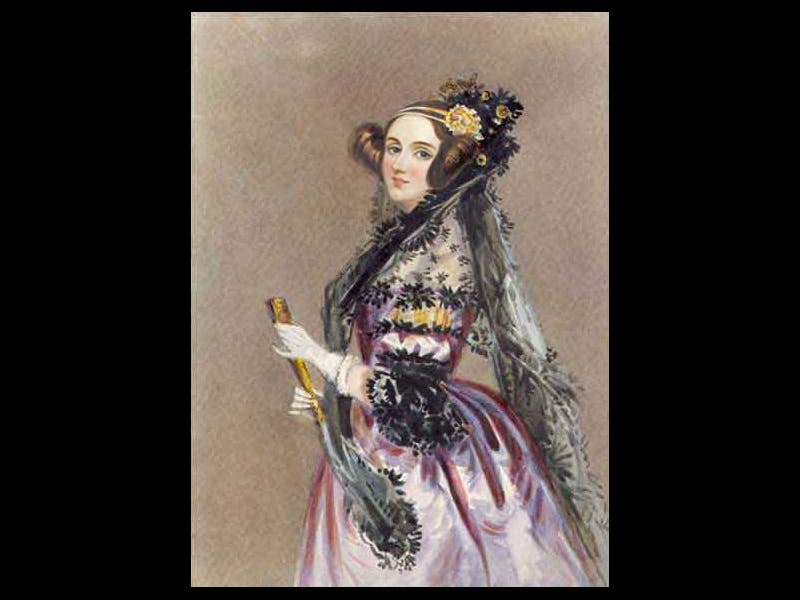Scientist of the Day - Ada Lovelace
Augusta Ada Byron King, the Countess of Lovelace, was born Dec. 10, 1815 (see first image above). Usually known as Ada Lovelace, she was the daughter of the poet Lord Byron and the mathematician Annabella Milbanke; she inherited Byron's looks and joie de vivre and her mother’s mathematical aptitude. When Ada was one month old, her mother left Byron after one affair too many, and Ada never saw her father again. In 1833, Ada met Charles Babbage (third image), who was then building his first Difference Engine, an elaborate mechanical calculator, and was also working on ideas for his Analytical Engine, a precursor of the modern computer.
In 1842, Babbage gave a talk on the Analytical Engine in Italy, and an Italian engineer wrote a review (in French) of Babbage's talk; Ada was asked by Babbage to translate the article into English, which she did. Babbage then suggested that Ada add some explanatory notes, and Ada did this as well--indeed, her notes were about twice as long as the translated paper. There were seven of these notes in all, labeled A-G, and the last of these is quite famous because it contains a computer program for solving a particular math problem, utilizing punched cards similar to those that were developed for the Jacquard loom. Because of this, Lovelace is commonly referred to as the world's first computer programmer, although scholars disagree as to how much help she might have had from Babbage. Nevertheless, no similar program appeared in print for over a century.
Ada’s translation and notes were published in the 1843 volume of Scientific Memoirs, a journal devoted to translations of continental papers. Some time ago we moved our copy of this volume out of the stacks and into the History of Science Collection, because computer incunabula like this paper are highly prized by collectors and tend to disappear from unsecured collections. Alfred Edward Chalon, a renowned Victorian portrait painter, did a watercolor likeness of Ada in 1838 (fourth image), which was the basis for the stipple engraving (first image). Both depict a vivacious and attractive woman, and we can see why she cut such a swath through the social circles of her day. Unfortunately, she died at the young age of 36, probably of cancer of the uterus. Lord Byron was exactly the same age when he died in Greece in 1824. And the Analytical Engine, for which Ada wrote her program, was never built, although a fragment, put together by Babbage himself, survives in the Science Museum in London (second image).
Dr. William B. Ashworth, Jr., Consultant for the History of Science, Linda Hall Library and Associate Professor, Department of History, University of Missouri-Kansas City. Comments or corrections are welcome; please direct to ashworthw@umkc.edu.








![Using an astrolabe to measure the depth of a well, woodcut in Elucidatio fabricae vsusq[ue] astrolabii, by Johannes Stöffler, 1513 (Linda Hall Library)](https://assets-us-01.kc-usercontent.com:443/9dd25524-761a-000d-d79f-86a5086d4774/a998eb50-55d2-4a88-ace2-a50aa5fa86e7/Stoffler%201.jpg?w=210&h=210&auto=format&fit=crop)

